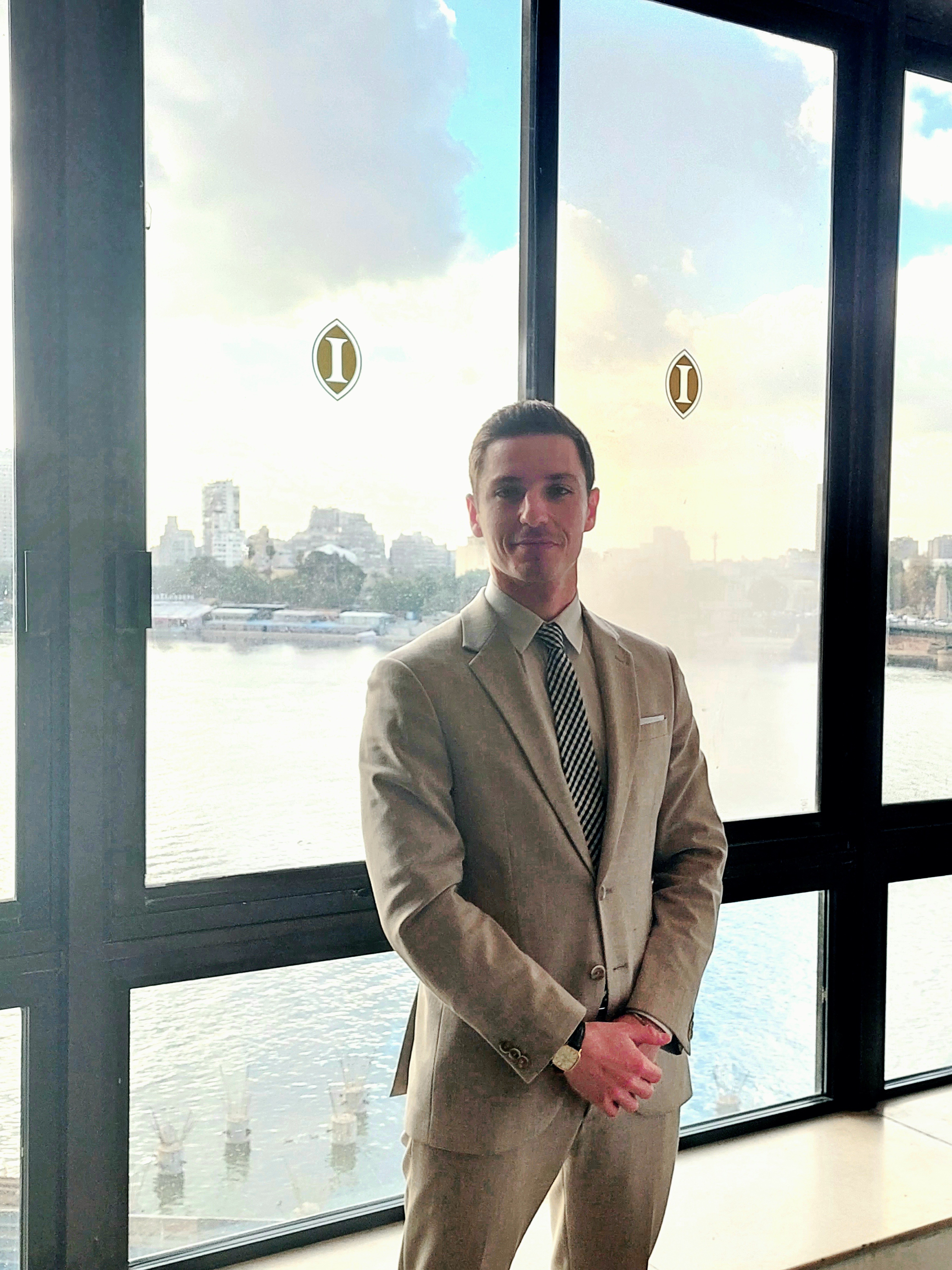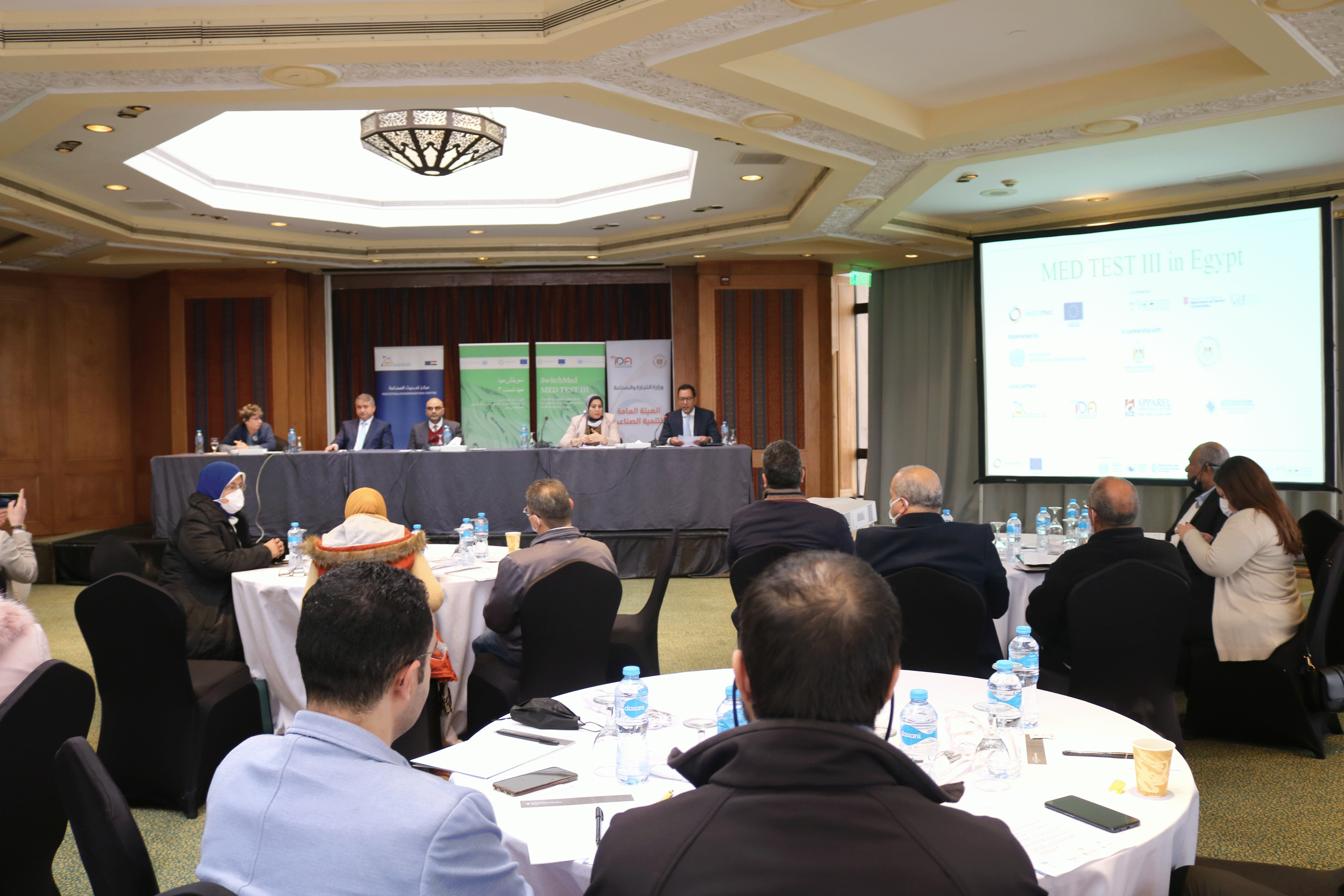Mapping the Textile Waste in Egypt: Results & Opportunities 2022-03-06 18:01:17
Mapping the Textile Waste in Egypt: Results & Opportunities
For the past year, the MED TEST III project has operated in Egypt, intending to transform the textile industry to apply practices related to a circular economy. Funded by the European Union, the project is implemented by the United Nations Industrial Development Organization (UNIDO) as part of the regional SwitchMed programme. Throughout 2021, the MED TEST III project team has undertaken a mapping of the waste streams in the textile sector to help understand the quality, type and origin of textile waste that is generated from Egypt's textile industry. During a seminar in Cairo, where results from this mapping study were presented, Khoyout took the opportunity to interview Mr. Maxime Bourland from Reverse Resources, one of the leading expert houses that helped accomplish this study.
- What is the outcome of the work executed in the past year that was presented in this seminar?
The objective was to present the results of the first phase of the MED TEST III project in Egypt, which concluded approximately one year of work and research since February 2021. We were able to organize a mapping exercise for the waste generated in the textile and clothing industry. Today's idea was to finally have a physical event showing results of meeting more than 40 companies in Egypt, mainly working in the textile and garment industry. This study aims to understand key characteristics of the industry and what kind of wastes and in what volumes it generates. Today was really about presenting the key aspects to companies participating in the studies, governmental bodies and ministries- with a longer version that will be available online-
We have presented the nature of the industry, the nature of challenges for the transition to a circular economy, and most importantly, introducing the opportunities for the sector.
- How it's becoming more important for brands to work with factories aware of sustainability methods?
Nowadays, each brand has its agenda for sustainability and circular economy; most of them have their own KPI's and objectives they want to reach, ranging from energy reduction to circularity. I believe it's a multilateral effect where consumers and regulatory stakeholders are putting pressure on brands. The brands themselves are concerned about this development, with rising costs for virgin materials and a limited supply of raw materials. The next logical thing to do is to re-use the waste generated in the production process. Even if you go down the supply chain to the factories, you will find them co-operative with a high acceptance of recycling the waste because they see it as a waste of money. In the end, it has to be a business case that can benefit everyone involved. Frankly, it makes so much sense, so we do not need to argue anymore. We are not telling people the importance of making the transition to a circular economy. They are already fully aware of that. We just need to show them and guide them on how to take the first steps.
- What are the criteria of the factory to be part of the initiative?
The first phase we concluded was the mapping phase with a full analysis of the industry and different opportunities; next, we will have the pilot projects. For example, in Tunisia and Morocco, pilot projects have already started. The pilots vary from establishing a local supply network of waste; we will also work with garment manufacturers to help segregate the waste better and handle it efficiently with the aim of establishing a valid business model that can be replicated in the whole industry. So, for Egypt, the pilots could involve companies who have already participated in the waste mapping as well as other companies relevant to the project we have not met yet.
- What were the kind of challenges you have noticed in adopting this program in Egypt?
The challenges are not specific for Egypt, they are the same challenges other countries face when transitioning to a circular economy. There will always be the problem of where to start, connecting the dots and bringing the supply chain together. As the study has shown, there are 212,000 tons per year of reusable and recyclable waste. So, the waste is accessible, and now we need to make it marketable. An additional challenge would be working with factories and training them to handle the waste efficiently to be reusable. Another point is to formalize the informal sector in the middle buying the waste from factories. For instance, we have seen in Morocco that businesses being brought in and trained, at the end of the day, are earning better, the market becomes formalized, and the waste the factories buy is better preserved.
- After one year almost of the project, how satisfied are you with the results?
Very much. I was quite surprised with the level of enthusiasm in Egypt from all the stakeholders and with the great support. I was also happily surprised by the advancement of the industry itself in Egypt. We found some companies already testing some level of recycling in their factories. Another feeling that I have noticed is that there is a lot of pride in and heritage in the Egyptian industry from the factories. Finally, let's face it, the race has already started; the conversations we are having here are happening in other major textile manufacturing countries. It's very competitive now, and we expect brands to gradually set higher selection standards from their suppliers (i.e. may request a minimum of 50% of the production waste directed to recycling). Overall, I was quite pleased with the engagement of the Egyptian companies and also the support of governmental bodies, export councils, ministries and the Industrial Modernization Center.
To review the full results of the study, you can log to:
https://switchmed.eu/wp-content/uploads/2022/01/MED-TEST-III-EGYPT_DA_9_TextileWasteMapping.pdf
For more information, please contact:
Mr. Ayman Elzahaby
E-Mail: a.elzahaby@unido.org




